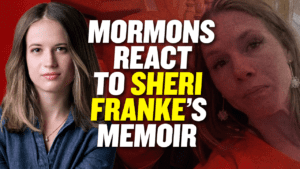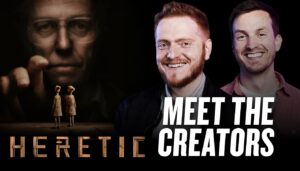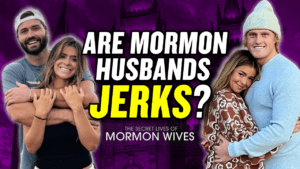In this episode of Mormon Stories, host John Dehlin is joined by historians Barbara Jones Brown and Darren Parry to analyze the historical accuracy of Netflix’s new series, American Primeval. Set in mid-19th-century Utah, the series explores real events and people, including the Utah War, the Mountain Meadows Massacre, Mormon settlers, and the Shoshone, Ute, and Paiute tribes. While the show is heavily dramatized, it draws from true historical events, and Barbara and Darren break down which aspects are fact and which are fiction.
Barbara is co-author of Vengeance Is Mine: The Mountain Meadows Massacre and Its Aftermath, and Darren is the author of The Bear River Massacre: A Shoshone History. Their perspectives are uniquely personal—Barbara is a descendant of those involved in the Mountain Meadows Massacre, while Darren is Northwestern Shoshone, with ancestors who lived through these tumultuous times.
Throughout the episode, they examine key elements of American Primeval, discussing Brigham Young’s portrayal, the depiction of the Mountain Meadows Massacre, and how Native Americans were represented. They address common misconceptions, including false narratives that Native Americans were responsible for the massacre, and explain the real motivations behind the violence. They also highlight the role of the Nauvoo Legion, the interactions between Mormons and the U.S. government, and the complex relationships between Mormon settlers and indigenous tribes.
The conversation touches on several inaccuracies in the show, such as exaggerated violence, the invention of fictional characters, and the portrayal of scalping, which was not a part of the Mountain Meadows Massacre. Barbara and Darren provide historical context for figures like Jim Bridger, Elias Higbee, and Wild Bill Hickman, as well as Mormon polygamy and its depiction in the series. They also discuss the impact of the massacre on Mormon history and the lasting consequences for both settlers and Native Americans.
Beyond the show, the discussion raises important questions about how history is told and remembered. They explore whether Brigham Young directly ordered the massacre, how early Mormon leaders viewed Native Americans, and the ethical implications of dramatizing real historical events.
This in-depth conversation provides an essential historical perspective for anyone watching American Primeval and looking to separate fact from fiction. Watch as Barbara and Darren bring their expertise and personal connections to the forefront, offering valuable insights into this complex and often misunderstood chapter of American history.




3 Responses
I personally think that this program was an intentional a smear on the Mormon Church. The history was horrible, but even if it was just a fictional depiction the history was so bad as to transcend any defense that it was just fictional entertainment. That said I have no regard for the Church and its truth claims nor it’s people considering recent political issues, but that is no excuse for the presentation of a movie that can’t even get the geography right let alone the narrative.
There was a question about Wild Bill Hickman. I have a book called ‘Brigham’s destroying angel’ by William Adams Hickman.
Wild Bill was a bodyguard of Joseph Smith Jr. and Brigham Young and also a Danite.
Darren is Northwestern Shoshone, and Barbara is a descendant of perpetrators of the horrific massacre at Mountain Meadows
The above comment in the Primeval post. Interesting that it refers to Darren as Shoshone but Barbara is a descendant of perpetrators of the horrific massacre! Like the Bear River Massacre wasn’t horrific?? Give me a break!! This portrayal shows complete prejudice towards the perpetrators of one group but not the other. Darren should completely disassociate himself from you slanted assholes. But this is expected from Mormon stories, the one sidedness never disappoints.